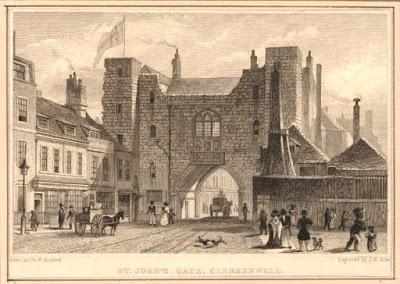
Engraving of St John's Gate, Thomas Hosmer Shepherd, 1829-31
The story begins in 1080, when a hospital for pilgrims was established in Jerusalem; the order became officially recognised in 1113 and cared for anyone regardless of faith. However, it also took on a military role during the crusades, and its members were known as Knights Hospitallers. The Order would move countries several times before reaching Malta in the sixteenth century; it is strongly associated with the island, sharing the Maltese cross as a symbol.
This is a very long London story, too. A priory had been established in Clerkenwell in the 1140s; when the Dissolution of the Monasteries came in 1540, Henry VIII was so impressed with the prior that he awarded him a pension. He never had to pay it, though - the prior died the day after handing over the keys, supposedly from a broken heart. His effigy is in the crypt of the Priory Church: it depicts an emaciated corpse, intended not as a portrait but a memento mori.

The priory's Tudor gatehouse survived, taking on very different roles, and remained central to London life. Under Elizabeth I, it housed the Master of the Revels, who licensed plays. Shakespeare would have been a regular visitor. After some time as a private residence, it got caught up in the printing industry then making its home in St John's Lane: a printing press first moved there in the 1680s. In the eighteenth century, it was a coffee house (run by none other than William Hogarth's father, who also offered Latin lessons) before becoming home to the leading periodical The Gentleman's Magazine - the title page bore a picture of the Gate. Samuel Johnson, who wrote and edited for the magazine, worked in a 'garrett' here; the magazine's founder, Edward Cave, was a friend of Benjamin Franklin and erected one of his lightning conductors on the building. The literary link continued when the Gate became a pub at the end of the century: Charles Dickens was among the customers at the Old Jerusalem Tavern.

Seventeenth-century fireplace
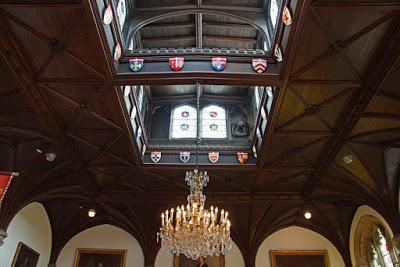
Chapter Hall
In 1888, Queen Victoria granted a charter to the Order of St John. They had bought back the Gate, and added new interiors including a Chapter Hall, as well as the museum. The Order's work as St John Ambulance, teaching first aid and providing ambulance services, is familiar to most of us. Coming full circle to its original purpose, it also runs an eye hospital in Jerusalem offering treatment to all regardless of faith.
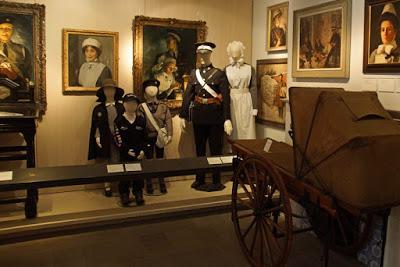
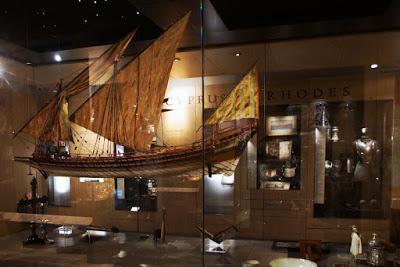
The visit continues across the road, into another building rich with history: the Priory Church.
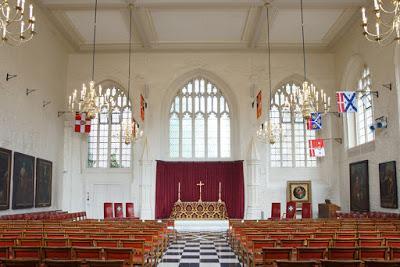
The main church is sixteenth-century, although substantial rebuilding and restoration were needed after it was badly damaged by an incendiary bomb in World War II.
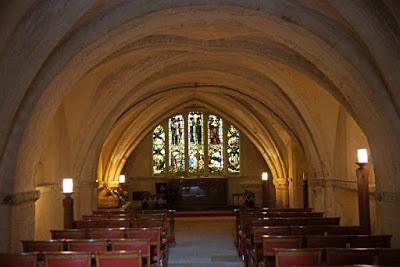
The crypt, though, dates back to the eleventh century and is an extraordinarily cool, atmospheric space. It contains one rather incongruous effigy, that of the very Spanish Don Juan Ruiz de Vergara. Since his death in the late seventeenth century, it had been in Valladolid Cathedral until given as a gift. The line along the top of the figure's legs, where it was cut in half to be shipped to London, is still visible.
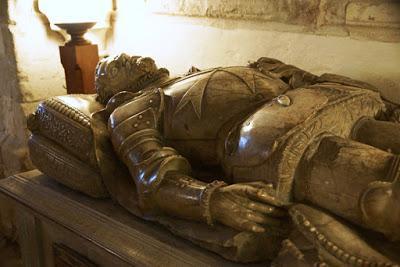
Alongside the church is a final hidden treat: the Cloister Garden, full of medicinal herbs.
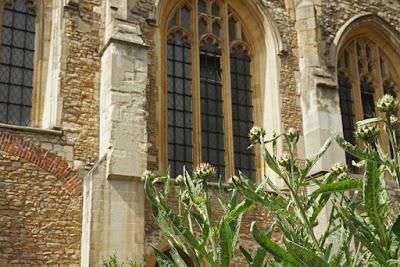

Practical information: The museum and church are open Monday-Saturday, 10am-5pm. Admission to the museum is free, but I'd highly recommend a guided tour for a suggested £5 donation. St John's Gate is in St John's Lane, EC1M 4DA - a short walk from Farringdon station.
Engraving of St John's Gate: public domain, via Wikimedia Commons

